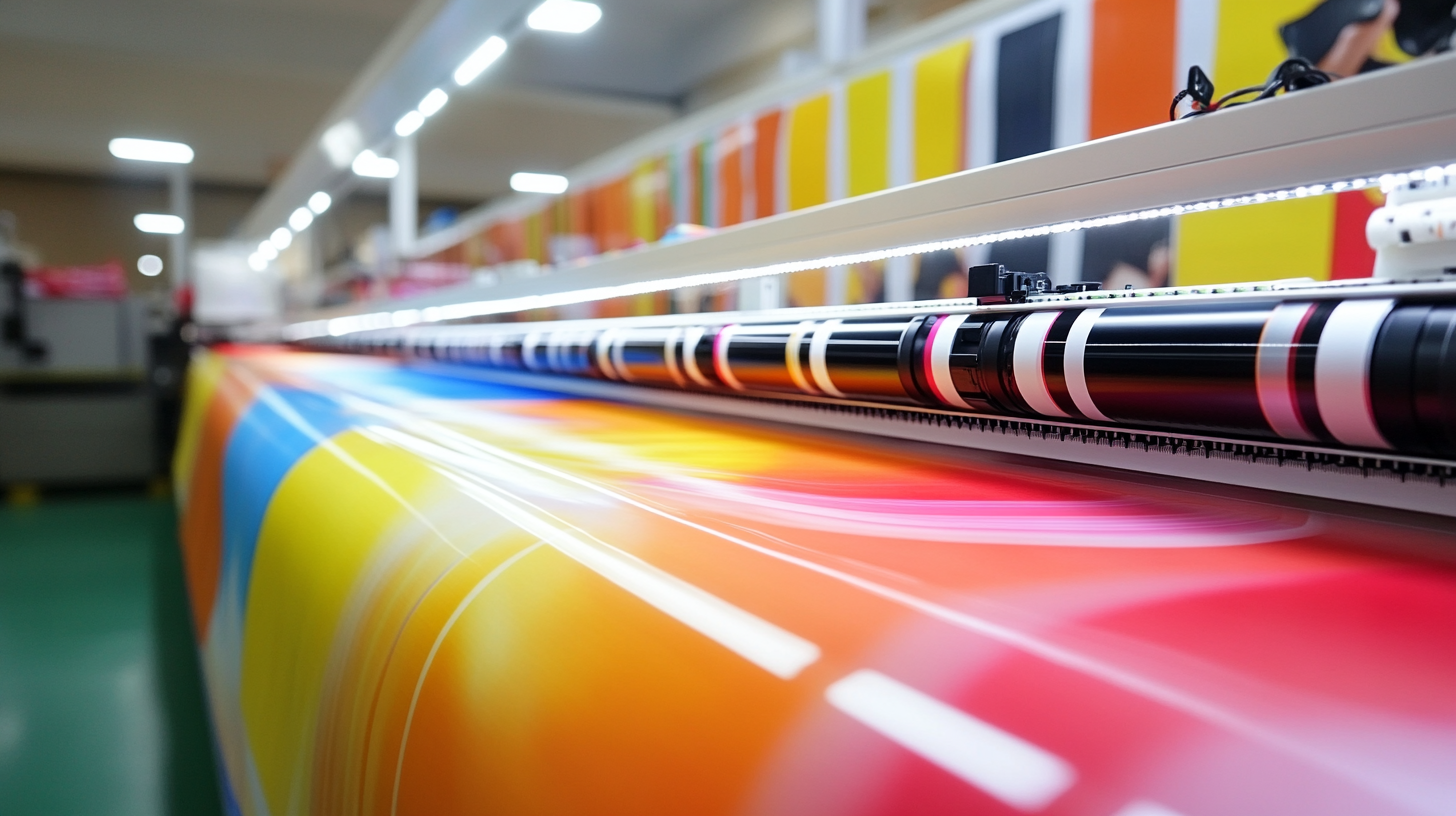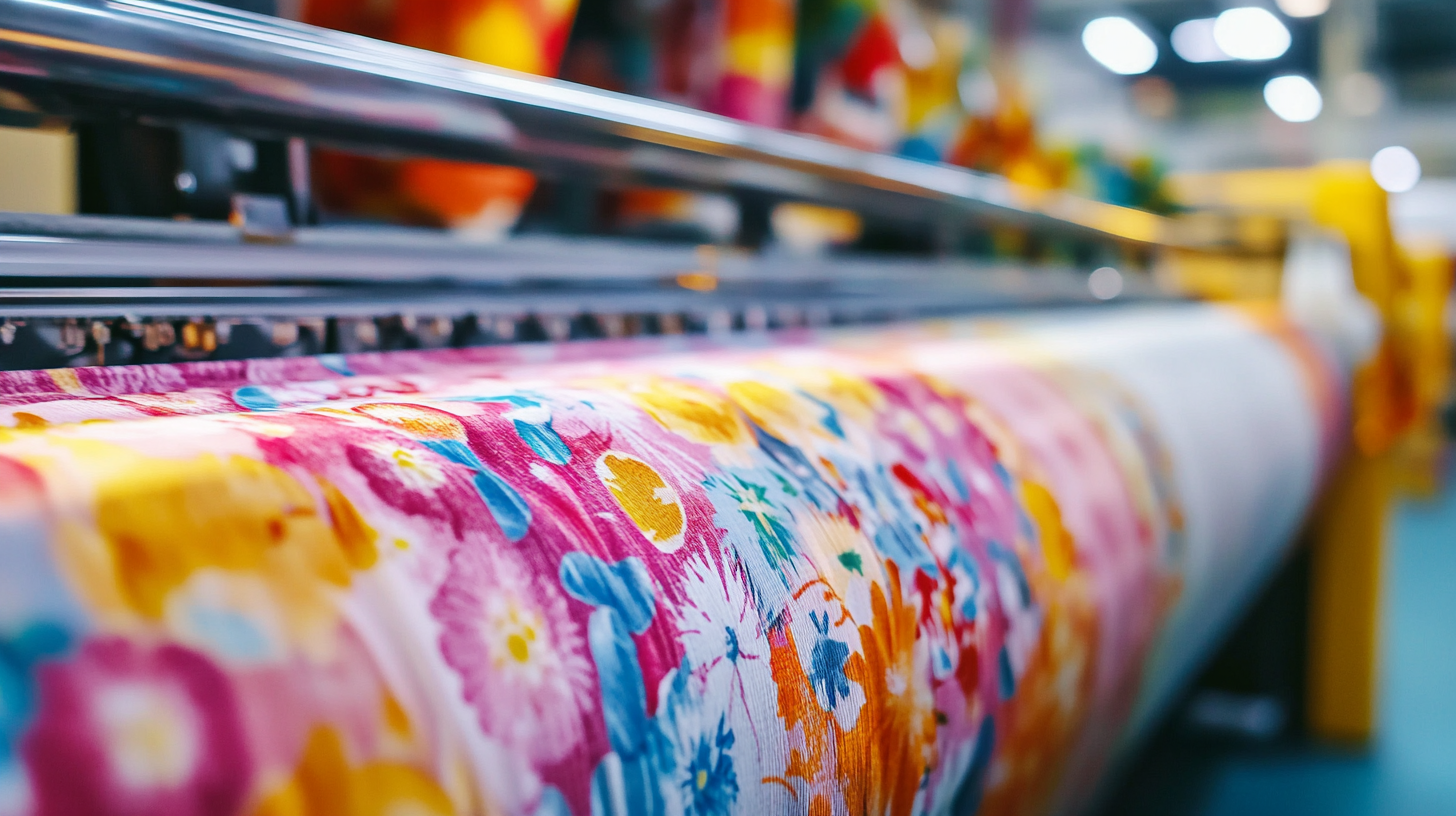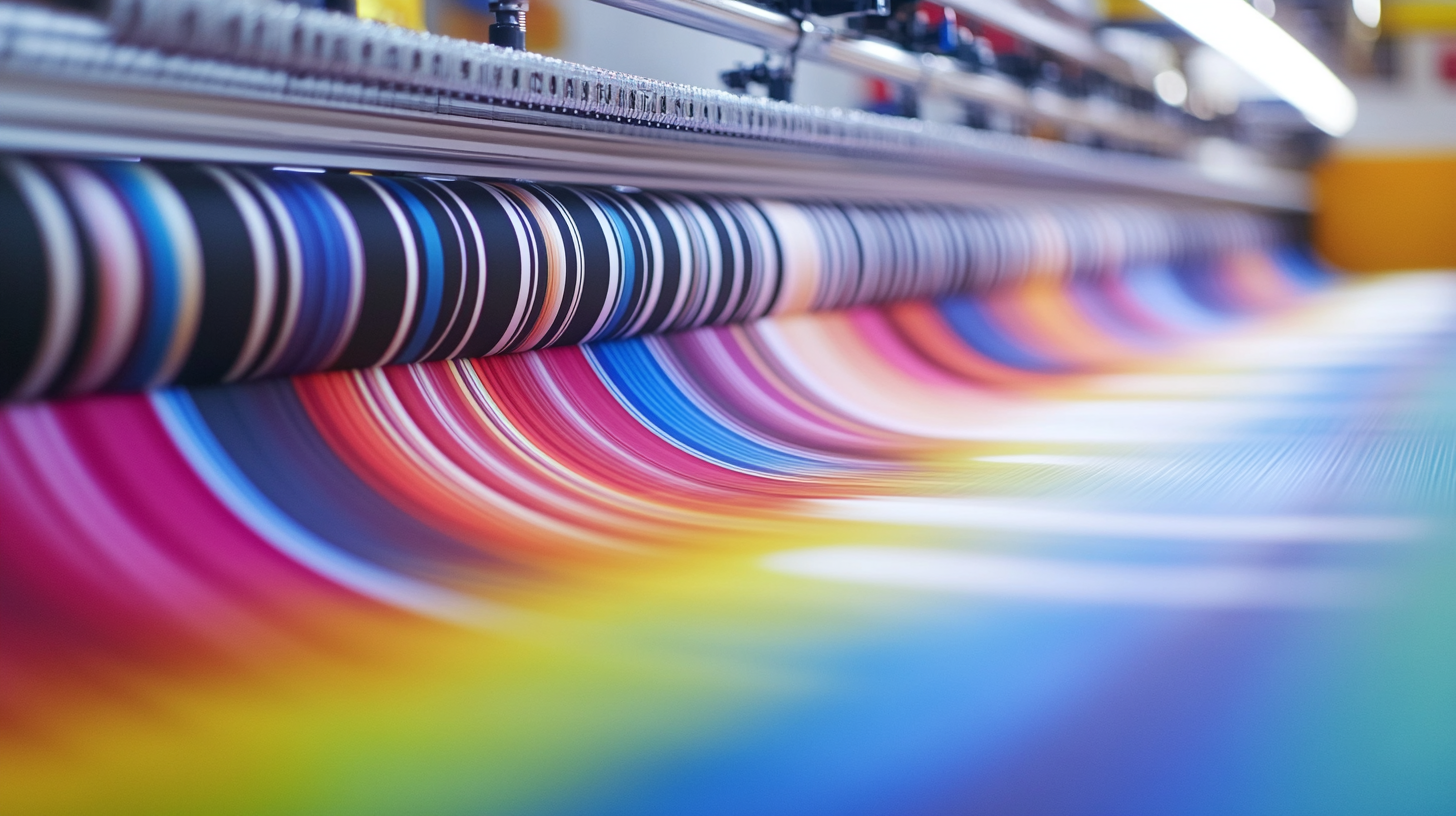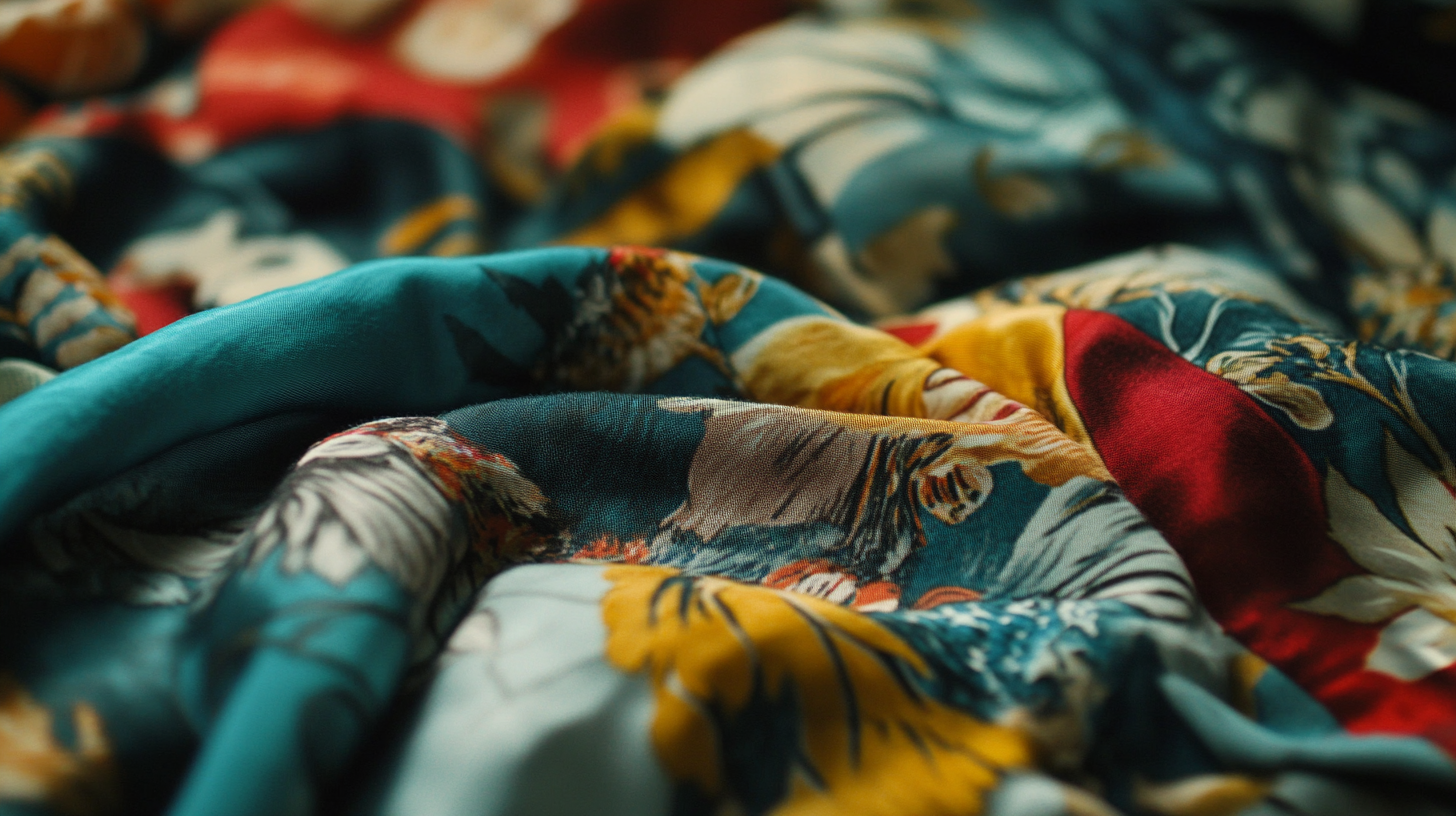Fabric printers have revolutionized the way textiles can be produced or customized across various sectors. Smithers Pira's latest industry report states that the global digital textile printing market is expected to grow to $3.1 billion by 2025 with a compound annual growth rate (CAGR) of 20.1% from 2020. This figure substantiates the mushrooming adoption of fabric printers in the industry-for example, in fashion, interior design, and automotive industries-where customization and short production runs are critical competitive advantages.
Besides their traditional functions, fabric printers have opened an exciting vista of potential uses such as branding, promotional products, and sustainable practice in manufacturing. An assertion by Grand View Research indicates that the strong growth being experienced in custom textile printing services can be attributed to the increasing propensity by consumers to purchase items that they consider unique and personalized-from the projections of considerable upside changes in the market dynamics,. As the industries gradually embrace this trend, it is not far-fetched, at least in terms of consumer needs and business requirements, that fabric printers will be the major driving force in modern manufacturing.

Fabric printing technology has revolutionized many industries by allowing themselves to be more creative and productive. Historically, the fabric industry used traditional methods of printing, such as block and screen printing, which, while effective, were slow and limited in their design possibilities. The birth of digital fabric printing brought about a radical transformation in an industry. This new technology has allowed computer-generated designs to be printed directly onto garments by means of precision and speed. Thus, business was able to produce customized textiles in a much quicker turnaround time with low setup costs. There seems to be a want and desire for new styles for expanding, enhancing, and using consumer engagement in many sectors from fashion through home décor and even automotive. Designers can use many different types, colors, and combinations, resulting in designs that are truly unique and express individual fashion. In home décor, digitally printed fabrics have made customization possible for interiors, allowing consumers to select designs to suit their tastes. On another front, the automotive industry is starting to use specialty printing technologies to print on fabrics for upholstery in order to beautify them and at the same time-to maintain quality. In addition, environmental friendliness advances in inks and fabrics have also made fabric printing a more sustainable way. More and more industries are asking for sustainable options as environmental concerns become prevalent, and digital fabric printing provides an option to manufacture quality textiles with minimum wastage. This progression signifies not just the technological advancement in fabric printing but also consider the need for sustainability for manufacturing processes in various other industries.

The adaptability of fabric printers has transformed many industries, especially fashion and interior design. Digital textile printing is now the lifeblood of fashion where designers wish to develop intricate patterns and individualized garments. The development in ink technology has provided means to achieve vibrant colors and quality prints fairly swiftly, allowing brands to respond immediately to market trends and consumer choices. Therefore, this increase in speed promotes creativity and, at the same time, helps in sustaining the ecosystem, as usually less digital textile printing creates more waste than conventional methods.
In the context of interior designing, fabric printing permeates the domain of newly created textiles for home decoration. Designers are no longer limited to pre-printed textiles; they may create custom prints at their discretion. The Mimaki Tx330 Series is one example of this development, providing wide-ranging capabilities to operate with a number of different materials with minimal impact on the environment. With the growing market for digital textile printing fueled by demands from the fashion and home textiles industries, fabric printing is here to stay, continuing to expand the boundaries of creativity in many other sectors.

It is a significant transformation happening in the fabric printing sector as sustainability becomes the trend. The more manufacturers are aware of the environmental impacts, the more they lean toward innovative technologies to reduce waste and practice environmentally friendly processes. A Smithers report states that globally, demand for digital textile printing is expected to reach 7.9 billion square meters by the year 2024, which indicates a strong trend toward sustainable production.
One of the most prominent innovations that fall into the category of sustainable fabric printing is the introduction of water-based inks. Water-based inks replace hostile solvent-based inks that emitted harmful VOCs (volatile organic compounds) on one hand but are environmental and human-friendly on the other. Recent studies suggest that by using water-based inks, the hazardous waste is reduced up to 80%, so restraining the ecological footprint created by the printing process.
The advancements in dye sublimation technology have also made for efficient energy and material consumption. For instance, the International Journal of Advanced Manufacturing Technology reports writers of modern fabric printers maximizing the dye used on the textile materials up to 95%, reducing waste and improving color yield. Efficient resource management maximizes profit while meeting the increasing consumer and industry stakeholder demand for sustainable practices.
The incorporation of environment-friendly practices in the course of the industry's evolution is thus set to build a healthier planet and keep companies ahead of market trends. Sustainability offers fabric printers the opportunity to align with consumers seeking environmentally safe products while maintaining their position in an ever-increasing arena for competition.

The fact that fabric printing has transformed the field of consumer experience today is reflected in the way the market is moving toward different industries and is custom tailored using specific machines. Such state-of-the-art technologies in printing are allowing businesses to offer customers very personalized products according to their individual preferences. As consumers are becoming more interested in buying unique and made-to-order products, fabric printers have come to the rescue here, wherein these devices have the flexibility of functioning and enabling the user to create intricate designs or patterns right on demand.
Artificial intelligence enhances this trend in personalization through processes and technologies, specifically incorporating AI within fabric printing. The design phase is enhanced through AI technology for fast prototyping and modifications that totally fit consumer requests. The combination of digital technology alongside traditional manufacturing processes allows brands to surpass customers' expectations not only in fulfilling them but also in the sound, dynamic, interactive shopping experience. The organizations have recently taken advantage of leveraging large AI models to perform highly complex task automations, thus helping boost productivity and efficiency.
In addition, fabric printing is moving towards transformed dimensions where modern technologies meet industries and digital advances synergistically, extending applications of fabric printing beyond the usual fashion and textiles. It opens alive avenues-from home decor to promotional goods for meaningful storytelling through the versatile groundwork of fabric printers by a want for new ideas in the minds of consumers. This change makes the brands rethink their strategies, where a fresh paradigm is created on customer relation, a paradigm where customizing is not just an option but a crucial aspect for a modern consumer experience.
The very fabric-printing industry awaits phenomenal growth because of the uptake of textile product customization and personalization in the emerging markets. In the recent report presented by Smithers Pira, the global digital textile printing market, expected for technology factors and rising consumer demand for unique design on fabrics, is reaching $3.5 billion by 2025. The subscription of fabric printers for fashion activities, home décor, and industrial usage within the Asia-Pacific and Latin American markets shows exciting growth acceleration.
With sustainable fabric-printing practices on the rise in alignment with consumer demand for eco-friendly products, analysts estimate eco-textiles to generate revenue of $191 billion by 2025. This reinforces lower-impact printing methods. These sustainable approaches are first in line for adoption in emerging economies, where textile manufacturers are seeking ways to minimize waste and increase efficiency. Such a shift would further support environmental objectives and also create a favorable position for such efforts in the market.
Sustainable fabrics possess varying applications far and beyond their conventional apparel market. Fields like automotive, healthcare, and interior design are currently exploring the use of fabric printing for aesthetically pleasing yet functional products. Demand for printed upholstery and automotive fabrics is increasing, as mentioned in a report by Grand View Research, and it is projected to grow at a CAGR of 5.2% through 2027. Such diversification creates further avenues for fabric printers, making them valuable tools in creating unique propositions for the companies in an already saturated market.
The emerging market is not only seeing faster volumetric growth due to fabric printing but is also witnessing an innovation and sustainability-driven transformational shift into how industries will engage in textile production in the years to come.
Fabric printing has revolutionized the fashion industry by allowing designers to create intricate patterns and personalized garments, enabling rapid responses to market trends while minimizing waste.
Sustainable practices in fabric printing include the use of innovative technologies, such as water-based inks and dye sublimation, which significantly reduce waste and ecological footprints compared to traditional methods.
Water-based inks are environmentally safer alternatives to solvent-based inks, significantly lowering hazardous waste by up to 80% and reducing harmful emissions, making them essential for sustainable fabric printing.
Advancements in dye sublimation technology allow modern fabric printers to use up to 95% of the dye applied, minimizing waste and maximizing color yield, thus enhancing profitability and aligning with sustainable practices.
Fabric printers are enhancing consumer experiences by enabling businesses to offer highly personalized products tailored to individual preferences, creating unique and bespoke items that cater to modern consumer demands.
Artificial intelligence aids fabric printing by facilitating rapid prototyping and design adjustments, improving customization capabilities and enhancing the efficiency of production processes.
Fabric printing has expanded its applications beyond fashion to include home décor and promotional merchandise, allowing for innovative, personalized products across various sectors.
Customization is crucial in today's market as consumers increasingly seek unique items, and fabric printing enables businesses to provide a dynamic shopping experience that meets these preferences.
Flexibility in fabric printing allows brands to produce intricate designs on demand, helping them to exceed customer expectations and create stronger engagement through tailored products.
By embracing sustainability, fabric printing companies can appeal to environmentally conscious consumers, ensuring their relevance and competitiveness in a market that increasingly values eco-friendly practices.